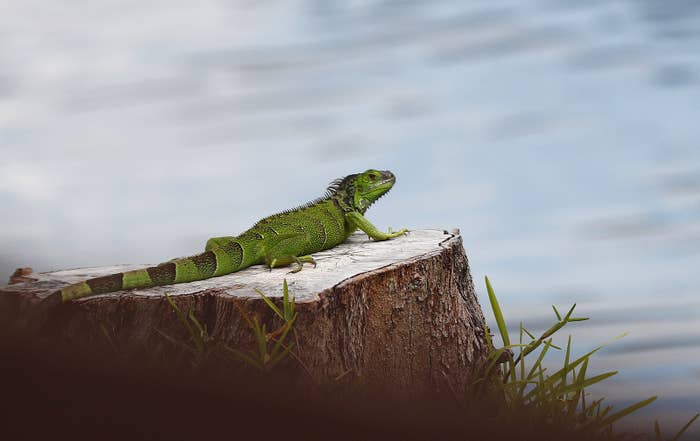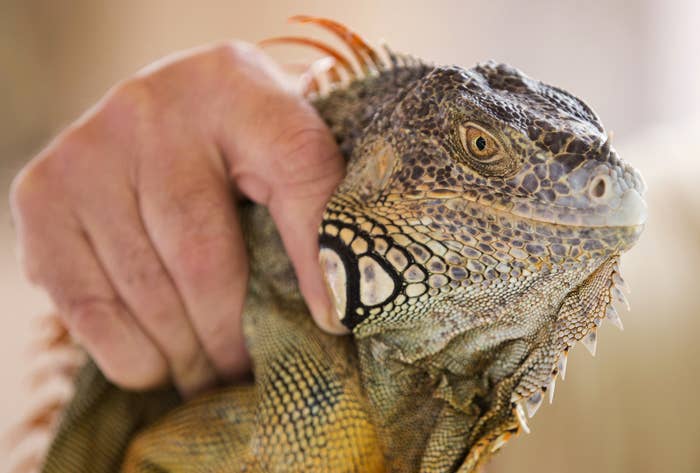
Green iguanas, the nonnative lizard known for wreaking havoc on Florida sidewalks, seawalls, and plants, are thriving as record heat grips the Sunshine State, so much so that officials are now urging homeowners to kill them whenever possible.
The Florida Fish and Wildlife Conservation Commission recently updated its website advising the public that green iguanas can be "captured and killed on private property at any time with landowner permission" and that homeowners don't need permits to kill the animals.
"This species is not protected in Florida except by anti-cruelty law," the website reads. "The FWC encourages homeowners to kill green iguanas on their own property whenever possible."
While the lizard has been around since the 1960s, the lack of a significant cold spell this year has allowed their numbers to soar, biologists and wildlife experts say. Plentiful food resources and a lack of predators have also allowed the species to thrive.
The iguanas can be kept as pets but cannot be released into the wild, the wildlife commission said.
"They’re just expanding their range up into counties north of Palm Beach, which I never thought they would," said Joe Wasilewski, a Florida-based conservation biologist who has studied iguanas for 40 years. "As it's getting warmer these animals are doing better — they're thriving."
A native of Central America and tropical parts of South America, the green iguana can grow to over five feet in length and weigh up to 17 pounds, according to the Florida wildlife commission. They dig long burrows, up to 80 feet long, damaging sidewalks, house foundations, seawalls, and canal banks.
They can live for 10 years or more and females can lay up to 76 eggs.

"They just keep reproducing out of control," Wasilewski said.
It's difficult to estimate how many iguanas there are in Florida, he said, but more than 3,000 green iguana sightings have been reported to the Center for Invasive Species at the University of Georgia in recent years.
In addition to infrastructure damage, green iguanas can also carry salmonella and pose aviation hazards, Wasilewski said.
"If you’ve got a 10 to 15 pound iguana on a runway sunning itself and a plane comes down it can cause devastating damage," he said, adding that he's seen iguanas burrow under airport runways.
But scientists and wildlife activists cautioned against homeowners taking matters into their own hands.
"We see this over and over again — people inhumanely trying to kill them with a BB gun or more powerful weapon, and injuring the public while doing so," Debra Parsons-Drake, executive director of the South Florida Wildlife Center, said in a statement provided to BuzzFeed News.
Parsons-Drake suggested that homeowners instead take measures to deter iguanas from their properties, like installing motion-activated sprinklers or metal sheet barriers on trees to prevent them from climbing.
"I would say please don't try to capture them by yourself unless you’re trained, or hire a professional to remove them," Wasilewski said. "Green iguanas left to their own are not dangerous but if a lay person tries to grab a four foot animal it’s going to defend itself."
